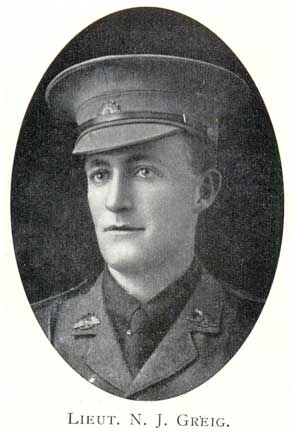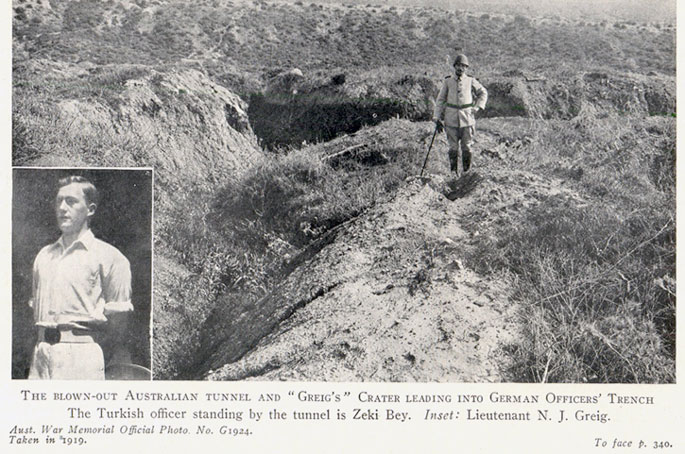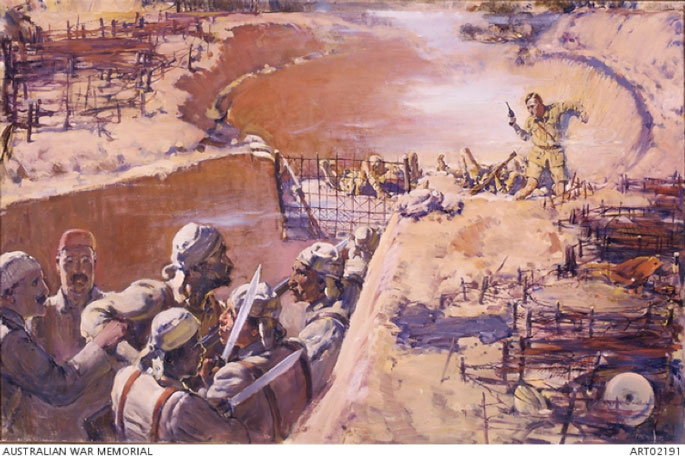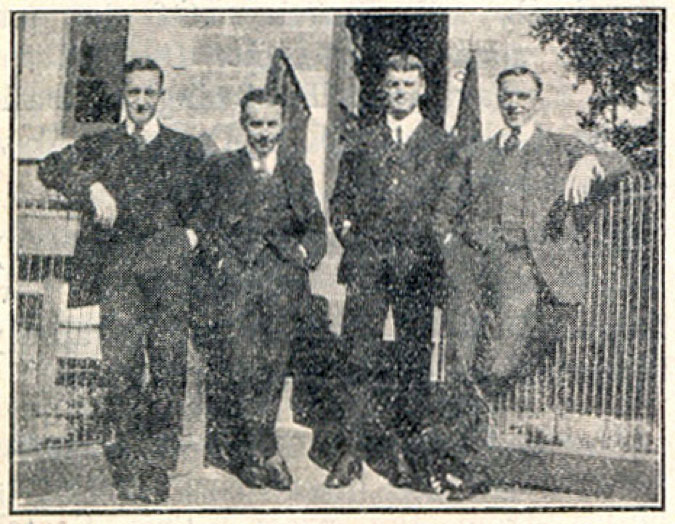Norman James Thomas GREIG

Norman Greig was born on 10 January 1891 in Daylesford, Victoria. His parents were David and Jane Agnes (née Harper) Greig. He was a teacher (‘Resident master’) at Scotch College (Science and Mathematics), 1910-1914.
Norman was a teacher at Scotch when he enlisted on 16 January 1915 in Melbourne, Victoria. He served in the 7th Battalion with the rank of Lieutenant.
Norman died on 12 July 1915 at Gallipoli. He was 24 years of age.
Service record
Norman (or Norm) Greig attended Wesley College and Melbourne University. On enlistment in 1915, he had been a member of Senior Cadets (64th Infantry Battalion) for 10 years, and qualified as an officer in 1912. His brother, Lance Corporal Gordon Greig, M.M., was killed at Zonnebeke, Belgium in 1917.
In July 1915, when diversionary raids were needed to keep the Turks from sending reinforcements to where the major British attacks were planned, Greig responded to Lieutenant Colonel ‘Pompey’ Elliott’s request to his officers by offering to lead a group of volunteers in one of these raids on an enemy-occupied crater at the end of a damaged tunnel near German Officers’ Trench. They would raid with bombs (grenades).
In daylight on 12 July, Greig’s party went across open ground – the tunnel was being repaired - and attacked the enemy-held crater. They killed three Turks there. When Greig called for reinforcements, some Australians working on the tunnel came out to help. However, an Australian machine-gunner further back saw these men above ground and thought they were Turks. He opened fire, killing two of the Australians. To add to the Australians’ woes the Turks had recovered from the surprise of the attack and started throwing bombs into the crater.Two more Australians were killed and Greig was wounded. He ordered his men back through the damaged tunnel, while he covered them. What happened to him next was for a long time a mystery. The Scotch Collegian contains various letters pondering his fate. One was the following: ‘Extract from a letter written by an officer in the trenches, Gallipoli, 15th July, 1915:
“The other day we were called upon to make a demonstration against the Turks, and I called for volunteers to attack a difficult position, and a fine young fellow, Lieut. Greig, a master at Scotch College, volunteered with ten men to make the attempt. Well, they made the attempt, but the Turks were in great numbers, and came at them throwing hand-grenades, etc., and after desperate fighting, Lieut. Greig was forced to order his men to retire. Two of them had been killed, two were dying, and all the others were wounded. The last seen of Lieut. Greig was that he was most gallantly covering his men's retreat, and kept pouring his revolver into the Turks, though badly wounded himself. Was he not a bonny brave lad thus to ensure the safety of his remaining men?''’
In September 1917 a Court of Inquiry held in France declared that Lieutenant Greig had been killed in action, but it was not until after the war that the mystery was solved. The Australian official historian, Charles Bean was visiting Gallipoli, to look over the old battlefields in 1919. The Turkish officer given the job of guiding him round was Zeki Bey, who had been in command of German Officer’s Trench during Lieutenant Greig’s raid. One day he said to Bean: “I wonder whether you would know anything about a young officer who was killed in my trenches during the early part of the campaign. He was a very handsome, fair-headed, square shouldered boy and a most gallant officer. It was during a raid on our trenches that I happened to come across him…As I came opposite to the crater I saw there was an activity, and rushing up I found facing me at the far side of the crater a young Anglo-Saxon officer. He was a splendid looking boy, and he was leaning with his back to the crater, his revolver in hand, facing some of our men. I shouted at once, “Don’t kill that officer; take him prisoner.” Our men turned to me and said: ‘He refuses to surrender, Major, we have tried to take him.” At the same time the boy sank back and fell at the bottom of the crater. We went out and picked him up, and I found that his leg had been broken by a bomb. He was dying at the time when I first saw him, and he could only have lived a few moments after. He was carried to the rear of the trenches, and I wish that I could tell you where his grave is, for he was certainly buried by my people…I have always wanted to asked somebody on your side as soon as I met them, because his gallantry and appearance made a great impression on me.’ Bean noted ‘there is not the faintest doubt that the officer in question was Lieut. Greig.’ He promised to ensure that Greig was mentioned in the official history, and kept his word.
In May 1917, Lieutenant George Wood, like Greig a former Scotch College teacher, wrote to The Scotch Collegian: ‘Brigadier-General Elliot [sic], who was in Ormond with me, told me that N.J. Greig deserved the V.C., and that he recommended him for it’.
Norman Greig has no known grave but is commemorated at Lone Pine Memorial, Gallipoli Peninsula.
Photographs and Documents:

From Bean, Official History of Australia in the War of 1914–1918, vol. II, chapter xi, http://static.awm.gov.au/images/collection/pdf/RCDIG1069996--1-.PDF, pp. 338-341.

This painting of Greig’s last moments was commissioned in 1923

Norman Greig is on the left here, pictured at Scotch College, East Melbourne
Sources:
- Australian War Memorial (www.awm.gov.au): Roll of Honour, caption to AWM photograph P10427.015
- National Archives of Australia (naa.gov.au): service record –NAA, B2455, Greig N J, http://recordsearch.naa.gov.au/SearchNRetrieve/Interface/DetailsReports/ItemDetail.aspx?Barcode=4711126&isAv=N
- Bean, Official History of Australia in the War of 1914–1918, vol. II, chapter xi, http://static.awm.gov.au/images/collection/pdf/RCDIG1069996--1-.PDF, pp. 338-341
- The AIF Project, https://www.aif.adfa.edu.au/showPerson?pid=119271
- Scotch Collegian, 1915, 1919
- McMullin, Ross, Pompey Elliott, Scribe, Melbourne, 2008